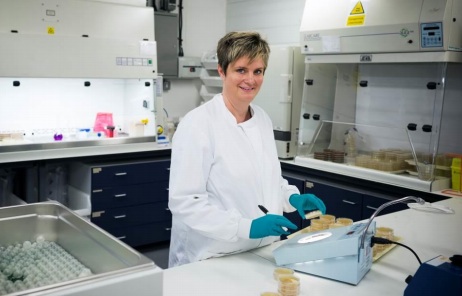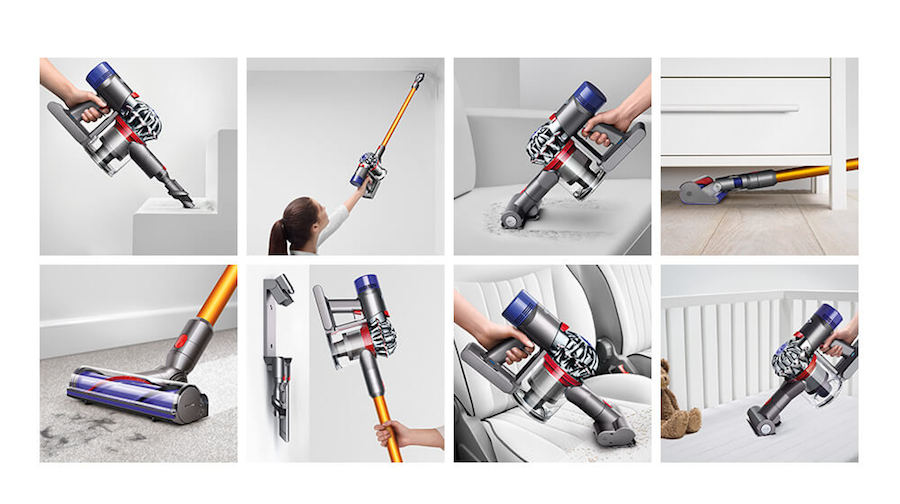Your environment at home has more to do with your skin and health than you think. We spoke to Karen Hall, Microbiologist at Dyson – which you might know as the brand that sells high-tech vacuum cleaners, fans, and most recently, hairdryers – to find out more about household allergens that may be affecting your skin.

Daily Vanity (DV): What are the most common household allergens?
Karen Hall (KH): This might make your skin crawl, but the culprit is the dust mite! The dust mite goes through three main life cycles. It starts off as an egg (a female adult can lay up to 60 – 100 eggs in the last five weeks of its life). Then, it hatches into a six-legged larva before emerging as an eight-legged dust mite. Millions of these bugs can be found in what we often imagine to be a safe zone – our mattresses.

Did you know – the average mattress can be home to anywhere between 100,000 to 10 million dust mites? The problem lies in the waste that they produce; it contains a protein that causes an allergic reaction. A single dust mite alone can produce up to 2,000 faecal pellets in just 10 weeks.
You might have a problem if you have frequent symptoms of sneezing, watering eyes, rashes and a blocked or runny nose.
Yet another common culprit is mold, or mold spores in specific. This is especially true for parts of the world that have moist, humid environments – like Singapore!
The symptoms can vary – from inconvenient sneezing, itching eyes and rashes to serious lung infections.
DV: Are there any that are specific to Singapore’s climate?
KH: Certainly! We conducted a dust research study in Singapore just a couple of years ago, in collaboration with the National University of Singapore. Using Dyson cord-free machines, we collected dust samples from a group of households and sent them to the lab for analysis.
Most of these samples contained three species of dust mite – Dermatophagoide pteronyssinus (European house dust mite), Dermatophagoide farina (American house dust mite) and Blomia tropicalis (Tropical house dust mite). While Singapore is a cosmopolitan city, these are certainly foreign guests you wouldn’t want in your beds!
What was concerning was that the highest house dust mite antigen level discovered in a Singaporean dust sample was 6.66 μg/g. Allergen concentrations exceeding 2μg/g indicate an increased risk of developing house dust mite sensitivity in genetically susceptible individuals. In addition, to the above we found that close to a third of these dust samples contained detectable levels of cockroach allergens.
DV: Which are the “dirtiest” areas in our homes?
KH: Dust mites are the number one enemy, and they can be found frequently in a few spots.
Firstly, our mattresses and pillows can play host to millions of dust mites so it’s important to clean them frequently.

Other types of upholstery, particularly carpets are also susceptible to dust mite infestations. Not forgetting soft toys such as teddy bears! These are surfaces which come into contact frequently with human skin, which provides food for them to thrive and reproduce.
You might be surprised to know that pet dander can be found even in homes that don’t have pets! Cat dander is a sticky protein and can be transferred via our clothing to homes that do not have cats. They sit in dust that can be found deep in the fabric of our mattresses, carpets, curtains and high up on shelves and surfaces that we frequently neglect to clean.
DV: How will our skin be affected by them?
KH: Depending on the sensitivity of your skin, you may experience anything between redness to tiny or big, red bumps on your skin – definitely not flattering if you’ve got to look your best at work or on a night out!
People who are susceptible to eczema should pay particular attention to these allergens. Dust mite proteins, mold spores and pet dander are known to trigger severe itching, redness, oozing or scaly rashes. In more serious cases, they may experience dry skin that can crack and even bleed.

There are more indirect, insidious effects of allergens on our skin that we don’t think about often enough – sleep. Many of us can relate to the discomfort of a strange, unexplainable itching or throat tickling while we’re trying to sleep. This frustration causes us to lose precious beauty sleep, which in turn leads to our skin appearing pale and yellow. Puffy, dark circles, which I understand is frequently referred to as “panda eyes” in Singapore can also form under your eyes.
A chronic lack of sleep brought about by allergens causes your body to release more stress hormones known as cortisol. According to some published studies, cortisol may lead to the breakdown of collagen, which is the protein that keeps our skin looking smooth and elastic, resulting in a tired and aged appearance.
DV: Is general, regular cleaning good enough to get rid of them?
KH: While washing your sheets helps, it is the mattress that plays host to these allergens. Many people ‘clean’ their mattresses by dusting them and shaking them off outdoors, or even beating them with a stick – this is unfortunately ineffective. This is because dust mites have hooks that hold on to the fabrics. The best method is to remove their food source – dead skin cells.

People try many ways of cleaning their mattresses. Some gimmicky contraptions on the market claim to kill dust mites, such as UV light cleaners. Unfortunately, UV light cleaners are highly unreliable. A dust mite would have to be sitting stationary on the surface of the mattress for approximately 60 seconds straight to be killed.
DV: How do we combat these allergens?
KH: Firstly, washing your upholstery at least one or twice a week as a good start. This includes your sheets, carpets, rugs and curtains. Make it a point as well to vacuum high-up surfaces – these often-forgotten spaces are home to many dust bunnies and allergens.

Finally, invest in a good vacuum cleaner that offers powerful suction. Many handheld and cord-free vacuum cleaners on the market claim to be able to remove dust mites. In reality, their suction and performance is limited by the motor that they use. Most of them sport motors that are simply a scaled down version of the conventional motors you would find in corded machines, which makes them weak. This is compounded by bags that clog frequently, further reducing their effectiveness and power.
DV: Could you share with us how the new Dyson V8 helps reduce these issues?
KH: Certainly. The Dyson V8 cord-free vacuum cleaner runs on the patented Dyson digital motor V8, which means that it offers a lot of power in a very small package. It delivers 115AW in suction power – as much as a corded machine, which enables it to penetrate the deep into our mattresses where dust mites reside.
The Dyson V8 also features whole-machine HEPA filtration. This means that there is no re-emission of ultra-fine particles which can trigger further allergies. A post motor filter sits on the back of the machine, capturing anything down to the size of 0.3 microns. Essentially, any air it expels is cleaner than the air you breathe.

Of course, the Dyson V8 is also really convenient to use – it’s versatile form in combination with a range of accessories allows it to transform quickly between a stick vacuum and a handheld machine to clean the various surfaces of your home.
The expert is Karen Hall, a Microbiologist at Dyson. Her field of work include studying various microscopic threats that people face at home, and figuring out the best ways to tackle them. She also assesses existing technologies that are on the market that claim to tackle these threats and problems, test them and identify the gaps and problems that hold them back in performance and effectiveness.
The Dyson V8 Fluffy retails at SGD999, and is available at major departmental and electrical stores including Tangs, Takashimaya, Harvey Norman, Best Denki, Courts and Gain City. The machine includes a 2 year warranty on parts and labour.

